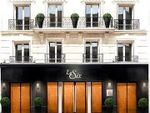Paris Getting Around
Getting Around In Paris
Getting around Paris is much easier than many other capital cities. With it’s excellent public transport system, which is run by the state owned RATP, and it’s compact size, it’s incredibly easy to get from A to B in a relatively short space of time.
On foot
The city is surprisingly easy to navigate on foot, and it is really only in the Montmartre district that there are any hills. It is, other than the metro, the best way to see the city and experience the changes as you walk from arrondissement to arrondissement. However, take care at pedestrian crossings, as the green man does not necessarily mean that the traffic will stop.
Metros
The Paris metro system is by far the easiest way to get round the city, and is the envy of many other capitals. Opened from 5.30am to 12.30am everyday, this is the quickest and most convenient way of getting round the city. Many of the stations are worth a visit in their own right, with beautiful tiling (Liege - Line 13), fantastic murals (Abbesses – Line 12) or the Louvre (Line 1) which makes you feel like your train has pulled directly into the museum itself. Single tickets or blocks of 10 (carnets), along with various passes, can be purchased from any of the stations, tourist offices and some tobacconists. Please see www.ratp.fr for more information. Please note that any RATP tickets are valid on the metro, RER or bus network.
Trains
There are 6 major rail stations in Paris (Gare du Nord, Gare de Lyon, Gare d’Austerlitz, Gare St Lazare, Montparnasse, and the Gare de l’Est) where trains depart for various destinations within France, and other European countries. The Gare du Nord is the site for the cross channel train, the Eurostar, which connects France to the UK in under 3 hours. The RER (Réseau Express Régional) suburban express network has five lines (A, B, C, D & E) covering five zones, and is open between 5am to 1am. The system is linked by the metro network and some SNCF trains.
Buses
There are a number of companies offering hop on/hop off tourist buses, which stop off at all the major sites. The bus network operates between 6.30am to 8.30pm, with some routes continuing until 12.30am. Your metro ticket is valid (see above), however it is possible to purchase a ticket on board. All tickets must be validated by punching them in the machine situated next to the driver. After the metro closes and the buses stop, the only public transport available is the Noctambus, which operates 18 different routes between the Place du Chatelet and the suburbs. Routes A to H, P, T & V serve the right bank, and northern suburbs and routes I to M, R & S serve the left bank and southern suberbs. An owl logo on bus stops will tell you whether the Noctambus will stop.
Waterways
There are various different companies offering river cruises, however, these are much more for sightseeing as opposed as getting around the city.
Taxis
It’s often much easier to find a taxi rank than it is to hail one in the street. The white light on the roof indicates whether the taxi is free, whilst an orange light means that it is busy. Ensure that the meter is operating, otherwise you will have to haggle with the driver to agree a price. Please note that taxis levy a charge per item for any luggage stored in the boot, and also a charge at night.
Airport
Paris’s main airport and Europe’s second busiest is the ultra sleek Roissy-Charles de Gaulle, situated 23km north of the city. One of the first airports to have an integrated rail system, it has direct links into the capital by the rapid RER/TGV train service, which takes approximately 45 minutes. Regular RATP buses and taxis also provide transport straight into the heart of the city. Orly Airport is the second largest airport in Paris, and situated 14km south of the city, Orly handles mainly domestic and charter flights. It’s easily reached from the city centre by the efficient RER, and the RATP runs the Orltbus, which departs every 15 minutes from Denfert-Rochereau.
 |
 |
 |
 |
||
 |
 |
 |












 Search For Paris City Breaks
Search For Paris City Breaks




.jpg)


